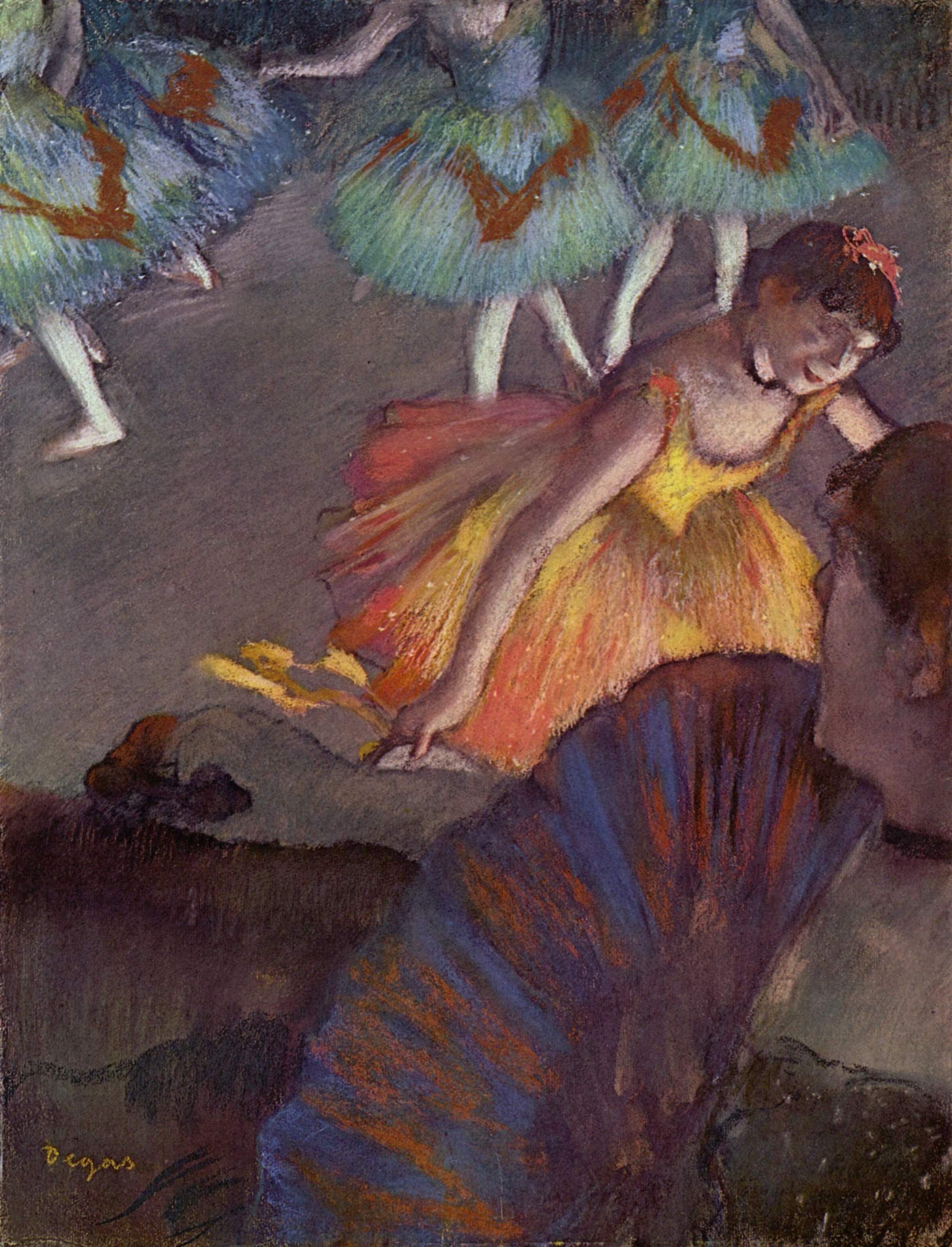art-Degas.com
Edgar Degas 1834-1917
Edgar Degas - A Ballet Seen From The Opera Box 1885
 A Ballet Seen From The Opera Box |
From Philadelphia Museum of Art:
The only public space at the Paris Opéra that Degas depicted was the stage, the center of attention for spectators and performers alike and, for the artist, the site of a fascinating intersection of reality and illusion. Degas's views of the stage were very unconventional. Instead of presenting a complete panorama as if scanned by a well-placed audience member, he usually focused on single figures or parts of the set, seen in close proximity or from unusual angles. Features of the performance were often unexpectedly juxtaposed: orchestra players with distant ballet dancers or on-stage figures with glimpses into the wings. In some compositions the action is seen from above, looking down from a point directly above the stage.
Degas made vivid use of light and shadow in his stage compositions, often emphasizing their strange distortions of the performers' features. Theatrical lighting at this date was still primitive, with rows of gas lamps attached to the scenery and some simple electric lights for special effects. The simulation of moonlight, mist, or fire was much admired by contemporary audiences, but Degas preferred to avoid such illusions, depicting his dancers as real individuals standing on a wooden stage. Many of his pictures show faces transformed by dramatic lighting from above or below, and some contrast the gloom of the wings with the dazzling spectacle of performance.
Degas's close-up views often recall the distorted effects of space and focus caused by binoculars or opera glasses, which were common among audiences in his day. His pastels and paintings disrupt the grand public spectacle and emphasize the individual's preferences and location within the theater. They also bridge the gap between viewer and performer, revealing the dancers as imperfect athletes exerting themselves on wooden floorboards, rather than as remote, fairylike creatures.